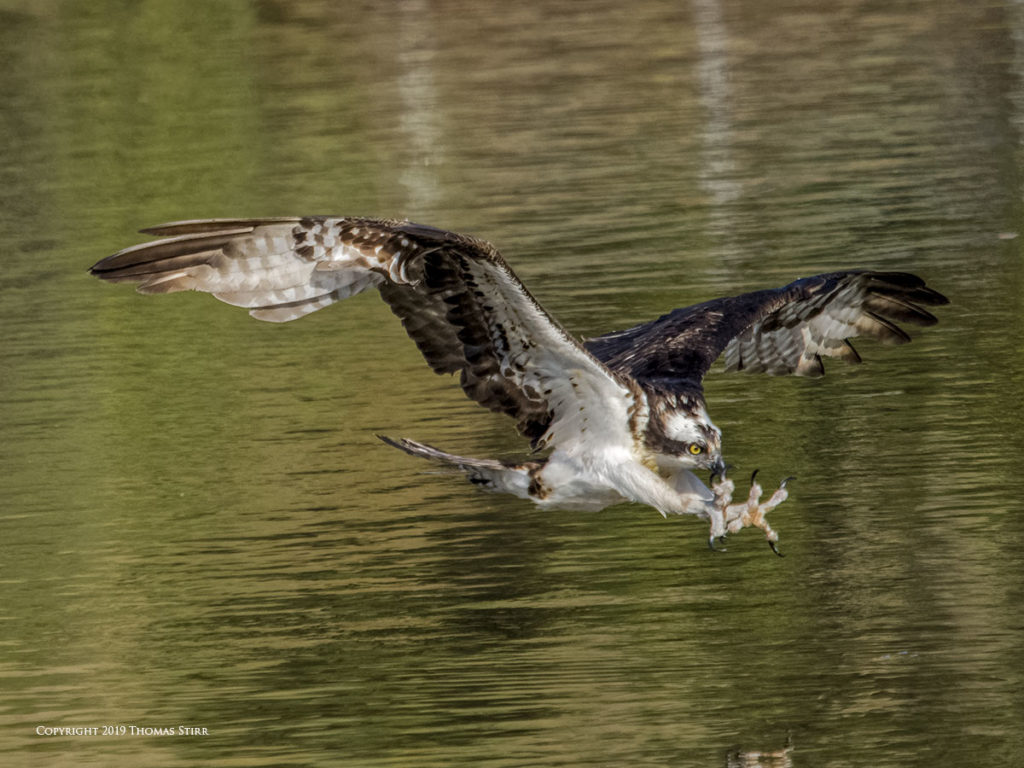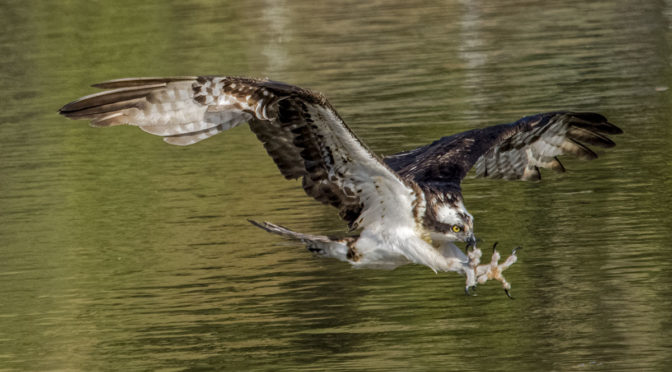Since it is getting late in the birding season in Southern Ontario, I made some time in my schedule to visit Hendrie Valley yesterday. My hope was to capture some images of one of the few remaining ospreys in the area. Mother Nature cooperated and I was treated with an opportunity to photograph an osprey swooping in with its talons thrust forward.
This article shares a selection of fourteen images and begins with five consecutive photographs of the osprey with its talons thrust forward during its attack. I have never had the chance to photograph an osprey demonstrating this behaviour from this specific shooting angle before.
NOTE: Click on images to enlarge.

I was in the process of changing the settings on my E-M1X in order to capture some images of chickadees (e.g. fast shutter speed) when I noticed the osprey swooping in. All I had time to do was turn 90 degrees to my left, acquire focus on the osprey and start firing off my AF-C run.




You’ll notice in the image above, that at the moment of impact, a protective membrane covers the osprey’s eyes.

After catching its target fish the osprey submerged for a few moments. As it came to the surface it beat its wings strongly to rise up out of the water.

The more that I use my E-M1X, the more I appreciate its quick auto-focus capabilities. The images in this article were captured using the low sequential silent shutter mode. This operates at 18 frames-per-second with full continuous auto-focus. I’m still experimenting with my E-M1X bird-in-flight settings. For these images, I used AF-C + TR with my camera set to ‘Airplanes’ subject tracking mode.

I had my auto-focus sensitivity set to +2 and AF Scanner to mode3. C-AF Center Start and Center Priority were also used. For most of my image run the E-M1X maintained good auto-focus lock on the osprey. I was able to capture a number of images as it began to fly away with its catch. However, I did miss some images at the end of my AF-C run when the osprey was flying in strong shade.

I’m discovering that the 4:3 ratio of the micro-four-thirds format sensor makes it a bit easier to avoid clipping wings when photographing birds-in-flight. The additional vertical space in the frame is helpful.

The E-M1X’s M4/3 sensor has very good dynamic range and colour depth. This gives my Olympus files a lot more latitude when working in post as compared to my Nikon 1 V-Series cameras. These images were captured in fairly strong sunlight at about 9:15 in the morning.

When birding with my Olympus kit, I do miss the additional reach of my 1 Nikkor CX 70-300 mm f/4.5-5.6 zoom lens (i.e. efov 810 mm). I’m currently limited to an efov of 600 mm with my Olympus gear. It’s a shame that the Nikon 1 series was discontinued. Many people will never experience what an excellent, lightweight birding kit it could be.

All things considered, I’m very pleased with the birding performance of my Olympus gear. I’m looking forward to 2020 when Olympus is scheduled to introduce some additional long telephoto lenses. Having some additional reach is exciting to contemplate!
Technical Note:
All photographs in this article were captured hand-held using camera gear as noted in the EXIF data. Images were produced from RAW files using my standard process and were cropped as necessary… most at least 30% on the width.

How you can help keep this site advertising free
My intent is to keep this photography blog advertising free. If you enjoyed this article and/or my website and would like to support my work, you can purchase an eBook, or make a modest $10 donation through PayPal. Both are most appreciated. You can use the Donate button below. Larger donations can be made to tom@tomstirr.com through PayPal.

Word of mouth is the best form of endorsement. If you like our website please let your friends and associates know about our work. Linking to this site or to specific articles is allowed with proper acknowledgement. Reproducing articles, or any of the images contained in them, on another website or in any social media posting is a Copyright infringement.
Article and images are Copyright 2019 Thomas Stirr. All rights reserved. No use, duplication or adaptation of any kind is allowed without written consent. If you see this article reproduced anywhere else it is an unauthorized and illegal use. Posting comments on offending websites and calling out individuals who steal intellectual property is always appreciated!

